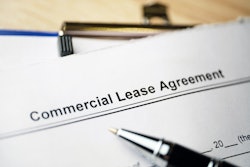As Americans moved indoors in 2020 and stocked up furnishings for home-offices, replaced and upgraded appliances and spent disposable incomes on e-commerce retail rather than on going out to concerts, restaurants, bars and sporting events, freight demand – and per-mile freight rates – have seen a prolonged surge through the second half of the year.
Lurking in 2021, however, could be shifts in the other direction. Current consumer trends are likely to hold in the first half of the year, but as vaccine distribution becomes more widespread and service and entertainment opportunities become more available, consumers could begin to divert their dollars away from goods and back to services by mid-year, said analysts from FTR last week.
However, they expect growth in overall freight demand to continue, albeit in a more muted level than was seen in late summer and early fall.
“We [forecast] a full recovery in truck loadings taking place in the third quarter of 2021,” said Avery Vise, FTR’s vice president of trucking. He spoke Thursday in an FTR webinar, the last of its months-long Engage series that detailed ongoing updates to economic and freight conditions since the pandemic. Thursday’s webinar centered around the outlook for 2021.
Vise forecasts truck loadings overall to grow by 5% in 2021 compared to 2020, following this year’s expected dip of 4% from 2019. Expected growth in 2021 includes a forecasted 6% increase in loadings for dry van, reefer and flatbed loads, with bulk and dump at 5% and tank loadings growing just 3%.
Capacity is expected to remain tight, too, at least for the foreseeable few quarters. That’s due to trucking industry employment still being about 50,000 jobs shy of its recent February peak, with carriers struggling to bring drivers back to the market for a myriad of reasons — slowdowns in issuances of new CDLs because of pandemic-caused disruptions at the state level, drivers retiring or moving to other careers and the Drug & Alcohol Clearinghouse weeding out tens of thousands of drivers already, to name a few.
Likewise, on the equipment side, truck and trailer manufacturers are facing their own constraints in keeping up with recent order activity, due to similar issues, with the pandemic slowing build rates and causing issues in recruiting workers, said Don Ake, FTR’s vice president of equipment.









